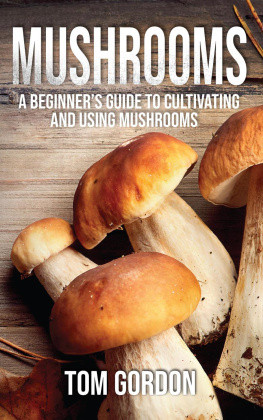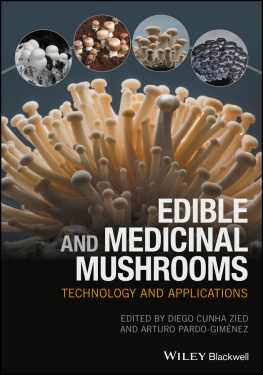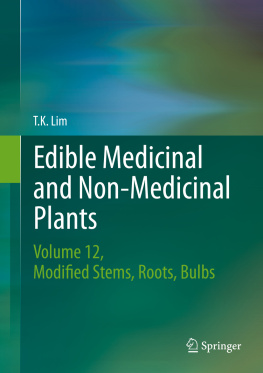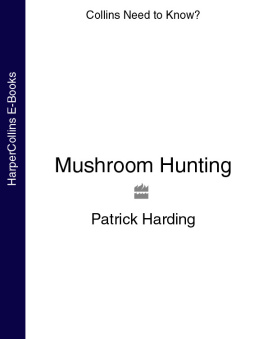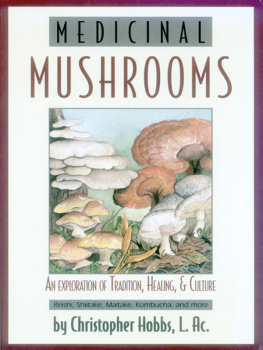Meuninck - Basic illustrated edible and medicinal mushrooms
Here you can read online Meuninck - Basic illustrated edible and medicinal mushrooms full text of the book (entire story) in english for free. Download pdf and epub, get meaning, cover and reviews about this ebook. year: 2015, publisher: FalconGuides, genre: Home and family. Description of the work, (preface) as well as reviews are available. Best literature library LitArk.com created for fans of good reading and offers a wide selection of genres:
Romance novel
Science fiction
Adventure
Detective
Science
History
Home and family
Prose
Art
Politics
Computer
Non-fiction
Religion
Business
Children
Humor
Choose a favorite category and find really read worthwhile books. Enjoy immersion in the world of imagination, feel the emotions of the characters or learn something new for yourself, make an fascinating discovery.

- Book:Basic illustrated edible and medicinal mushrooms
- Author:
- Publisher:FalconGuides
- Genre:
- Year:2015
- Rating:5 / 5
- Favourites:Add to favourites
- Your mark:
- 100
- 1
- 2
- 3
- 4
- 5
Basic illustrated edible and medicinal mushrooms: summary, description and annotation
We offer to read an annotation, description, summary or preface (depends on what the author of the book "Basic illustrated edible and medicinal mushrooms" wrote himself). If you haven't found the necessary information about the book — write in the comments, we will try to find it.
Meuninck: author's other books
Who wrote Basic illustrated edible and medicinal mushrooms? Find out the surname, the name of the author of the book and a list of all author's works by series.
Basic illustrated edible and medicinal mushrooms — read online for free the complete book (whole text) full work
Below is the text of the book, divided by pages. System saving the place of the last page read, allows you to conveniently read the book "Basic illustrated edible and medicinal mushrooms" online for free, without having to search again every time where you left off. Put a bookmark, and you can go to the page where you finished reading at any time.
Font size:
Interval:
Bookmark:
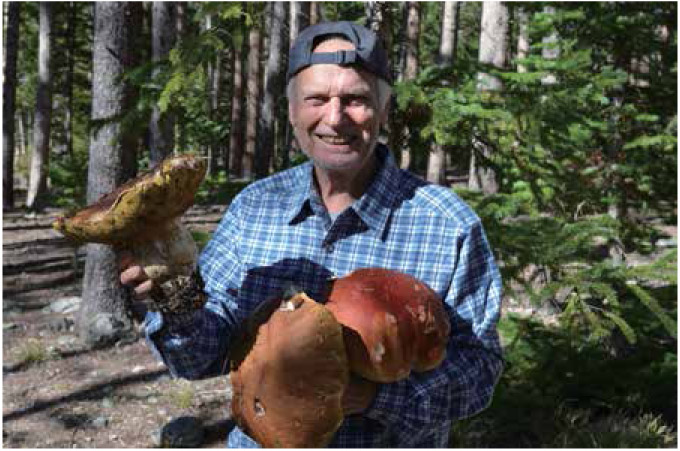
Jim Meuninck is a biologist and counselor who has studied the use of wild plants and mushrooms as food and medicine in North America, Europe, Central America, Japan, and China for more than thirty years. He lives on the shores of Eagle Lake in Edwardsburg, Michigan.
BASIC ILLUSTRATED

An imprint of Rowman & Littlefield
Falcon, FalconGuides, and Outfit Your Mind are registered trademarks of Rowman & Littlefield.
Distributed by NATIONAL BOOK NETWORK
Copyright 2015 by Rowman & Littlefield
Photos by Jim Meuninck unless otherwise noted.
All rights reserved. No part of this book may be reproduced in any form or by any electronic or mechanical means, including information storage and retrieval systems, without written permission from the publisher, except by a reviewer who may quote passages in a review.
British Library Cataloguing-in-Publication Information available
Library of Congress Cataloging-in-Publication Data available
ISBN 978-1-4930-0803-2 (paperback)
ISBN 978-1-4930-1468-2 (e-book)
 The paper used in this publication meets the minimum requirements of American National Standard for Information SciencesPermanence of Paper for Printed Library Materials, ANSI/NISO Z39.48-1992.
The paper used in this publication meets the minimum requirements of American National Standard for Information SciencesPermanence of Paper for Printed Library Materials, ANSI/NISO Z39.48-1992.The author and Rowman & Littlefield assume no liability for accidents happening to, or injuries sustained by, readers who engage in the activities described in this book.
This book is a work of reference and is not intended to supply medical advice to any particular individual. Readers should always consult their personal physicians for medical advice and treatment. The authors, editors, and publisher of this work have checked with sources believed to be reliable in their efforts to confirm the accuracy and completeness of the information presented herein and that the information is in accordance with the standard practices accepted at the time of publication. However, neither the authors, editors, and publisher, nor any other party involved in the creation and publication of this work warrant that the information is in every respect accurate and complete, and they are not responsible for errors or omissions or for any consequences from the application of the information in this book. In light of ongoing research and changes in clinical experience and in governmental regulations, readers are encouraged to confirm the information contained herein with additional sources, in particular as it pertains to drug dosage and usage. This book does not purport to be a complete presentation of all poisonous plants, and the genera, species, and cultivars discussed or pictured herein are but a small fraction of the plants known to have caused poisonings to humans and animals that might be found in the wild, in an urban or suburban landscape, or in a home. Given the global movement of plants, we would expect continual introduction of species having toxic properties to the regions discussed in this book. We have made every attempt to be botanically accurate, but regional variations in plant names, growing conditions, and availability may affect the accuracy of the information provided. A positive identification of an individual plant is most likely when a freshly collected part of the plant containing leaves and flowers or fruits is presented to a knowledgeable botanist or horticulturist. Poison Control Centers generally have relationships with the botanical community should the need for plant identification arise. Medicine is an ever-changing science and subject to interpretation. We have attempted to provide accurate medical descriptions of clinical management strategies, but there is no substitute for direct interaction with an expert clinician for assisting in patient care as well as a trained botanist or horticulturist for plant identification. In cases of exposure or ingestion, contact a Poison Control Center (800-222-1222), a medical toxicologist, another appropriate health-care provider, or an appropriate reference resource.
Here is a valuable field guide for foragers, homemakers, health practitioners, nutritionists, and chefs. The author is a plant guy, biologist, and counselor, who for many years suffered from Anglomycoparanoiaa profound fear of fungi. Then, in 2006, he discovered the cure, took up the challenge, and hit the books, searched the web, tramped fields and forests, and one by one added edible and medicinal mushrooms to his diet. This satisfying intellectual odyssey tugged him across the continent, deep into forests and high into mountains, searching for what appeared to be an endless supply of foodstuffs with health-protecting chemistry. Consider the numbers: A million plus species of fungi inhabit the earth with only one-quarter identifiedof that staggering number, 30 species are widely accepted as food. With so few found and so few used, the good news overwhelms. Mushrooms are therapeutic and nutritious. They are rich in minerals, low in fat, high in protein, and low in calories. They help prevent disease and are anti-inflammatory. Many mushrooms have antibiotic chemistry and stimulate the immune system. As food, they facilitate wound healing and may provide protection from cancer. One Japanese epidemiological survey over a period of 14 years revealed that cancer rates among workers at research mushroom farms in Japan were 1 in 1,000 compared to 1 in 600 for the general population. A preponderance of evidence documented in this field guide suggests that adding mushrooms to a broad-based, holistic diet provides nutritional benefits with a health-protecting boost. Given all this, lets open our minds and present to our palates these creatures that make life possible. Read and discover what I, a converted mycophile, have learned from the journeya mushroom odyssey with no end in sight.
Ten minutes into my first mycology class, the instructor said, Mushrooms are primarily toilets for the larger creature residing below. He also said, They are all edible, but many are poisonous. Funny guy! Perhaps all mycologists tilt their humor precariously. I prefer calling mushrooms fruiting bodiesthe integral reproductive organs of a fungus. They produce and disperse spores, thereby guaranteeing the success of the species. Mushroom mycelium and incorporated hyphae perform the essential task of decomposing organic matter into its elemental forms, enriching the earth and clearing away insufferable debris.
Fungi play other roles, too. They are parasites attacking and killing target plants and animals. Numerous mushrooms are mycorrhizal, living in a symbiotic and mutually beneficial relationship with an organism, specifically plant roots. They provide nitrogen, phosphorus, and increased moisture to the plant or tree, and the roots provide life-supporting carbon to the fungus. Knowing these associations and relationships will help you find mushrooms.
Two groups of saprophytic (plant-decaying) mushrooms, called brown rot and white rot fungi, have the ability to digest lignin (brown rot) or cellulose (white rot), the two primary components of wood. Brown rot fungi (70 percent of which are polypores such as agarikon and the artists conk) release enzymes that digest whitish cellulose and leave behind brownish lignin. The more numerous white rot fungithe oyster mushroom, for exampledigest lignin and leave behind cellulose. With their ability to digest and concentrate complex compounds, mushrooms are used to clean toxic-waste sites, restoring them to uncontaminated, safe areas. For more on mycoremediation and mycorestoration see Paul Stametss seminal book
Font size:
Interval:
Bookmark:
Similar books «Basic illustrated edible and medicinal mushrooms»
Look at similar books to Basic illustrated edible and medicinal mushrooms. We have selected literature similar in name and meaning in the hope of providing readers with more options to find new, interesting, not yet read works.
Discussion, reviews of the book Basic illustrated edible and medicinal mushrooms and just readers' own opinions. Leave your comments, write what you think about the work, its meaning or the main characters. Specify what exactly you liked and what you didn't like, and why you think so.

